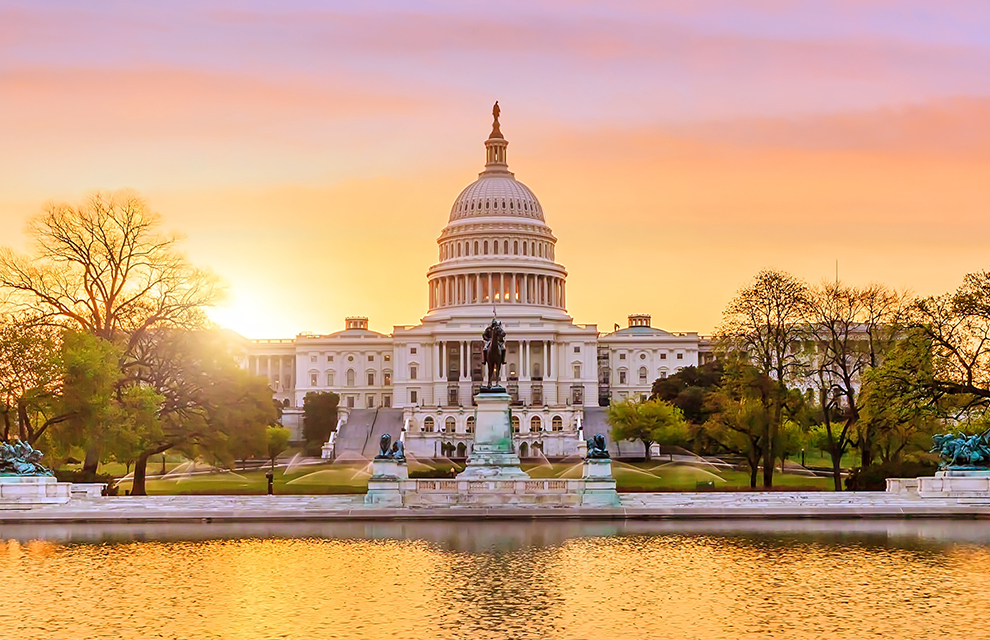With a ‘very active’ captive market in 2020, DC plans to launch a financial services regulatory sandbox this year that will include captives
The capital of the US, Washington DC, formally the District of Columbia, licensed its first captive insurer 20 years ago and since has earned a reputation of being among the top domiciles for captive insurance in the US.
The initial captive statute was introduced in 2000, it was then updated in 2004 and again in 2015.
DC has a progressive captive insurance and corporations code that meets the needs of captive owners. It is also home to knowledgeable dedicated staff of financial examiners and analysts who are well-versed in the regulation of captives, including risk retention groups.
As of 18 December 2020, DC had 155 licensed captives which represented a total of $1.4 billion in gross written premiums. The district caters to all types of captives, including agency, association, branch, cell, pure, rental and risk retention groups.
Of the 155 captives, DC has 32 licensed risk retention groups (RRGs), 71 licensed non RRGs and 52 licensed non RRG group cells.
The minimum capital and surplus for pure captives has been set at $250,000, while the minimum capital and surplus for most other captives is $400,000. There is no minimum capital for cell captives. Cell minimums are established by the insurance commissioner based on the cell’s business plan.
The captive market in DC has been very active this year, with several new formations, restructuring of existing programmes, and growth in cell captives, according to Joe Holahan, attorney at Morris, Manning, and Martin.
Cell captives have become increasingly popular in recent years, with Holahan suggesting that the trends continued in 2020.
While there are a variety of lines being written in DC captive programmes, Holahan highlights some of the most popular, such as deductible reimbursement and coverage for self-insured workers’ compensation plans, builder’s risk, commercial auto, professional liability, medical stop-loss, and contractual liability of various sorts.
High standards
The leadership of the Risk Finance Bureau have freely admitted that it does not intend for DC to be the largest or easiest domicile but instead is proud of the high standards it applies.
The Risk Finance Bureau does not encourage applications from small-employer health plan stop-loss captives because DC political leadership favours the use of the Affordable Care Act (ACA) exchanges.
It also looks closely at coverages and premium levels projected by small business captives electing IRS Code 831(b) tax treatment.
The Risk Finance Bureau says: “Not everyone will agree with this approach but the bureau believes it should make its priorities clear before a captive entity goes to the expense of application. That said, all applications will receive full professional consideration and courtesy.”
The 831(b) captives have been on the Internal Revenue Services (IRS) target list since 2016, as the Department of Treasury clamps down and include them on its ‘Dirty Dozen’ list of tax scams since 2014.
Holahan suggests that the approach to vet new captives under reasonable standards is “beneficial for the jurisdiction”.
He adds: “Captive owners benefit by being able to demonstrate that their regulator applies reasonable and consistent standards for solvency and governance.”
Karima Woods, commissioner of the DC Department of Insurance, Securities and Banking (DISB), states that the DISB captive programme is committed to growth.
All captive jurisdictions seek to avoid bad players and we have been successful in doing that, but Woods explains DC decided many years ago that it was in its “best interests to pursue quality over quantity”.
“For that reason, we avoided licensing 831(b) captives because we believed these captives were tax avoidance schemes rather than legitimate insurance companies. Our refusal to accept license applications for those types of captives has been vindicated, given the abuses that have occurred in connection with 831(b) captives.”
“Similarly, we refused to license stop-loss captives formed by self-insured plans that were attempting to use captives to circumvent the ACA,” she adds.
Innovation
As the capital city of the US, Washington has for 20 years been an attractive domicile for forming and managing captive insurance companies. In light of maintaining high standards and a solid reputation, the domicile is keen to keep ahead of the curve.
Woods says DC’s biggest opportunity lies in figuring out how to harness the potential of blockchain, smart contracts, artificial intelligence (AI) and machine learning, and other innovative technology in the insurance industry.
She explains that captive insurers have always been at the forefront of providing innovative solutions for commercial insureds.
The DC DISB plans to launch a financial services regulatory sandbox this year that will include captives, Woods reveals.
“The initiative will be instrumental in rethinking the way captives can be used to reshape commercial insurance, by eliminating inefficiencies, reducing costs, analysing data and improving underwriting and pricing decisions,” she adds.
According to the DISB, it is “poised to move forward” with the creation of a financial services regulatory sandbox.
The department wants input from innovators and industry experts to ensure that its legislation will be capable of accommodating entrepreneurs interested in fintech, insurtech and regtech.
“By fostering innovation and allowing new products and services to come to market, a sandbox can benefit consumers by increasing choice and reducing costs,” the DISB explains.
It says: “This is your opportunity to weigh in on the precise features you want to see in the district’s regulatory sandbox legislation.”
A recent A.M. Best report revealed that innovation is becoming increasingly critical to the long-term success of all insurers, and captives are no exception.
It suggested that well-structured innovation allows companies to develop sustainable competitive advantages and better respond to external challenges such as low investment yields, stagnant growth, and deteriorating expense ratio





